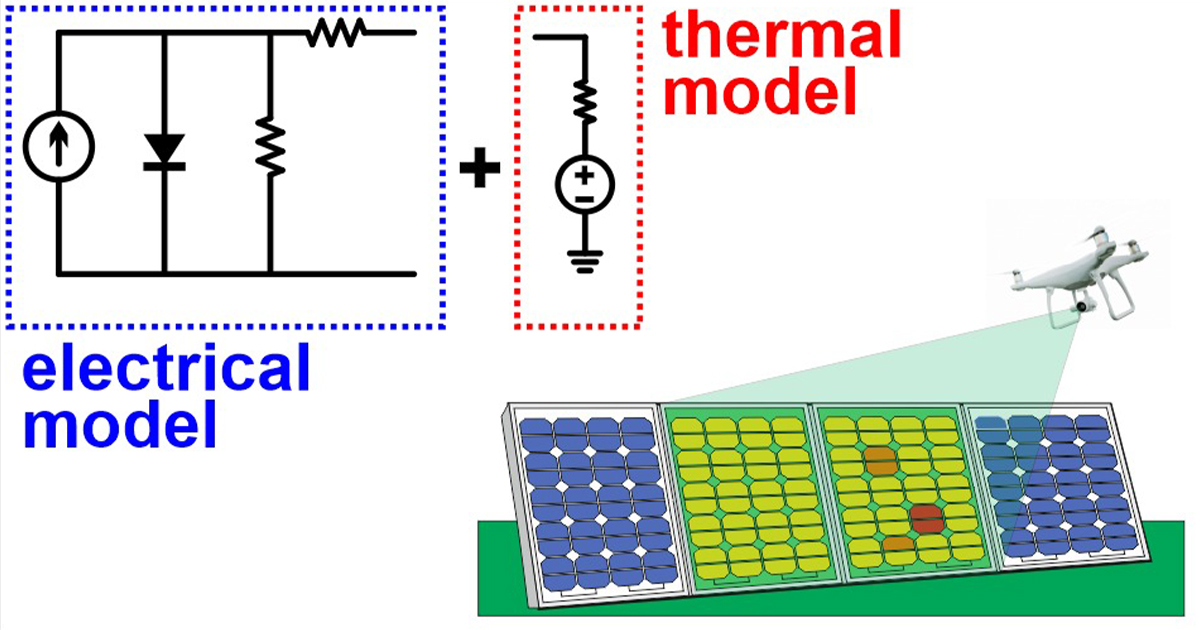Topic Menu
► Topic MenuTopic Editors


Electrothermal Modeling of Solar Cells and Modules

Topic Information
Dear Colleagues,
The Topic Editors are inviting submissions for a Topic on the subject area of “Electrothermal Modeling of Solar Cells and Modules”.
Solar modules are subject to considerable time variation of the temperature depending upon season, hour of the day, presence of clouds, wind speed, and nonuniform temperature distributions dictated by dirt, partial architectural shading, malfunctioning events, which in severe cases might also turn into hot-spots. High temperatures affect power production, while hot-spots are likely to entail reliability reduction (i.e., early aging) and even irreversible failures. It is therefore clear that an accurate electrothermal modeling of the solar module can be of paramount importance for the photovoltaic community, since it can (i) help to provide an in-depth understanding of the temperature influence on the behavior of the individual cells and the entire module and (ii) support the interpretation of IR maps (e.g., taken by low-flying drones), both aspects being poorly covered by the literature.
Papers suited to this Topic should be focused on:
- analysis of the 3-D heat propagation within the cell and/or the module;
- description and interpretation of the electrothermal (i.e., power-temperature) feedback;
- impact on the temperature field of position (latitude and longitude), tilt angle, day, hour of the day, and boundary conditions (including both radiative and convective mechanisms);
- efficient approaches to deal with the thermal and the electrical problems, as well as with the coupling between them;
- techniques relying on a calibrated electrothermal model for the interpretation of experimental temperature maps.
Prof. Dr. Vincenzo d'Alessandro
Prof. Dr. Pierluigi Guerriero
Topic Editors
Keywords
- electrothermal modeling
- experimental temperature detection
- heat propagation
- solar cells
- solar modules
- temperature maps
Participating Journals
| Journal Name | Impact Factor | CiteScore | Launched Year | First Decision (median) | APC |
|---|---|---|---|---|---|

Energies
|
3.0 | 6.2 | 2008 | 17.5 Days | CHF 2600 |

Materials
|
3.1 | 5.8 | 2008 | 15.5 Days | CHF 2600 |

Applied Sciences
|
2.5 | 5.3 | 2011 | 17.8 Days | CHF 2400 |

Polymers
|
4.7 | 8.0 | 2009 | 14.5 Days | CHF 2700 |

Solar
|
- | - | 2021 | 27.4 Days | CHF 1000 |

MDPI Topics is cooperating with Preprints.org and has built a direct connection between MDPI journals and Preprints.org. Authors are encouraged to enjoy the benefits by posting a preprint at Preprints.org prior to publication:
- Immediately share your ideas ahead of publication and establish your research priority;
- Protect your idea from being stolen with this time-stamped preprint article;
- Enhance the exposure and impact of your research;
- Receive feedback from your peers in advance;
- Have it indexed in Web of Science (Preprint Citation Index), Google Scholar, Crossref, SHARE, PrePubMed, Scilit and Europe PMC.

